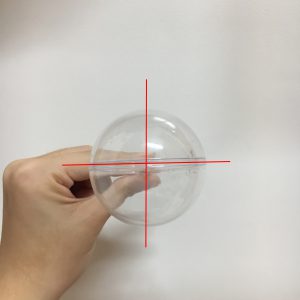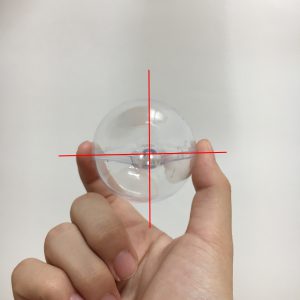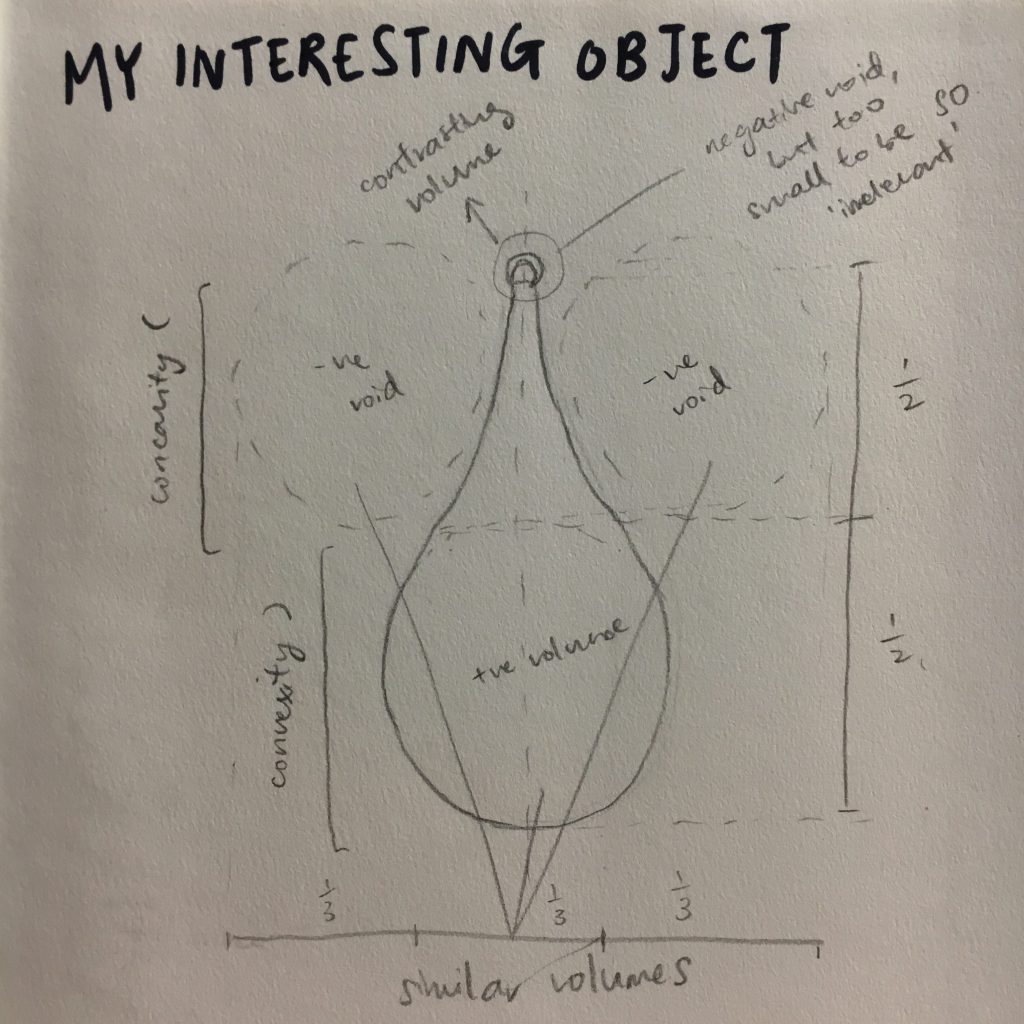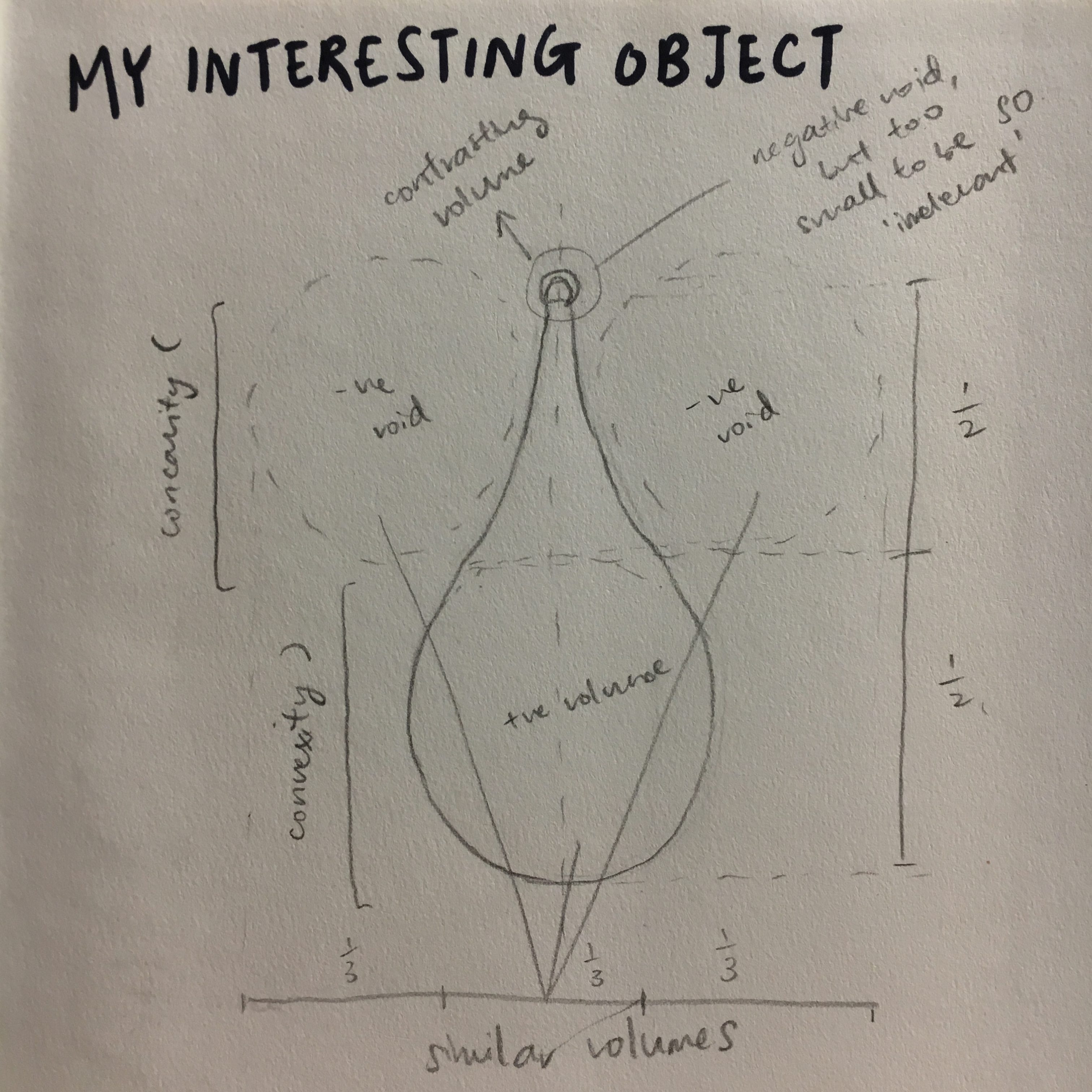To explain…
When upright: Tear drop
Upside down: Hot air balloon?
Bottom: Possibly a flat, 2D circle surface or a ball (Plane)
Top: A point
Side: A bird’s head
Red line – Line of symmetry (Not 100% accurate due to photo angles)






Another reason why this object caught my attention is also because it is symmetrical in almost all directions as seen in the rotational gif (only when divided by 90 degrees and not between the thin top and round bottom part)
2D SKETCH ANALYSIS

(The entire thing is the dominant, and there is no subordinate as the little negative space at the tip is too small to be considered relevant. If it was maybe three times its size, it could become the subordinate of the object.)
It was interesting to learn how to look at the object again in the eyes of a 3D artist, seeing how different elements like negative voids, positive mass, rule of thirds, similar volumes, contrasting volumes, dominant, subordinate etc. come into play. Now, there’s so many more reasons to why I find the object intriguing.
For instance, previously, I would not have said yes if I was asked if the object was designed using the rule of thirds in any way. I would have only seen it as half-half. However, now I realise that the object does actually (kind of) practice the rule, seeing that the two negative voids and the positive mass are of the same size.
Now I realise, there is more to 3D design than the aesthetics. I mean of course I’ve always known this… but now I actually know what the ‘more’ part is.
A post of my 3D sketch models for the magical pandora box word will be coming soon!


Hi Dion
Great elevational shots of your object and good attempt at finding a homogeneous background (perhaps minus the creases would be less distracting?) Do also superimpose some lines of symmetry and other comparative grid lines over the images.
See if you can increase the size of the 2D Sketch Analysis so I can review it more easily and indicate the ‘voids’ suggested by the shape of the object. looking forward to the rotational GIF 🙂
Hi Cheryl, thank you for the feedback! Will be working on the changes and figuring out the gif.